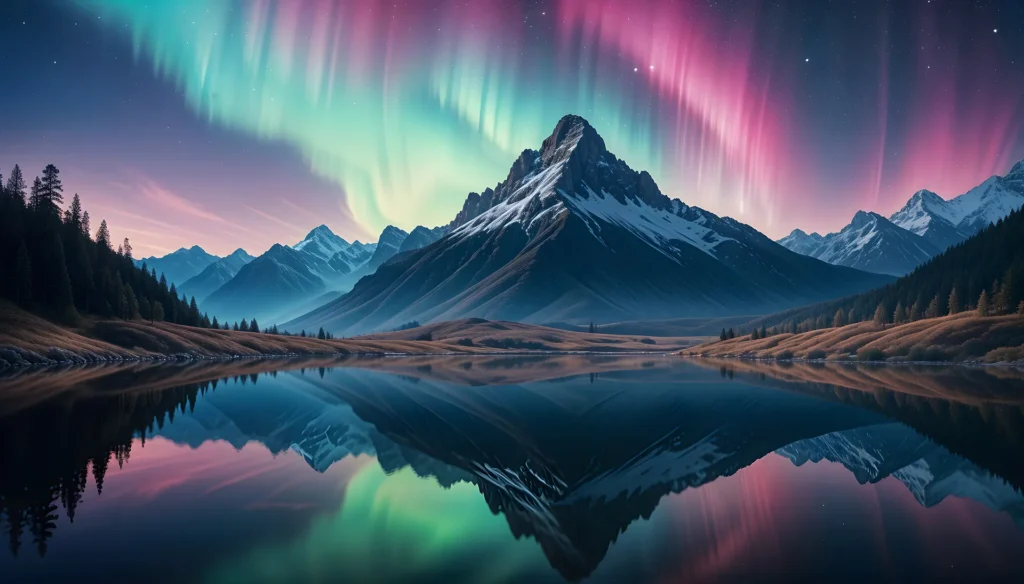Northern Lights Tonight: When and Where to Catch the Aurora Borealis

Imagine standing under a starry sky, when suddenly waves of vibrant greens, purples, and blues dance above you. This mesmerizing phenomenon is the Northern Lights tonight, also known as the Aurora Borealis. For many travelers and nature enthusiasts alike, witnessing this natural wonder is a bucket-list experience.
If you’re wondering whether you’ll get to see those magical colors tonight or if you’re planning your next adventure to catch this celestial display, you’re in the right place. Let’s explore what causes these stunning lights, where you can find them, the best times for viewing, and tips for making your experience truly unforgettable. Whether it’s tonight or another night on your calendar that beckons with potential auroras overhead—let’s dive into all things related!
What are the Northern Lights?
The Northern Lights, or Aurora Borealis, are a breathtaking natural phenomenon that paints the night sky with vibrant colors. Their ethereal beauty captivates onlookers and has sparked wonder throughout history.
These lights occur when charged particles from the sun collide with gases in Earth’s atmosphere. This interaction creates spectacular displays of light that can ripple and swirl across the sky.
Typically seen near polar regions, they manifest as shimmering green curtains, fiery reds, or even deep purples. Each color signifies different types of gas and altitude at which these collisions take place.
For many cultures, the northern lights tonight hold rich mythologies and spiritual significance. They have inspired countless tales from ancient civilizations to modern-day adventurers seeking to experience their magic firsthand. The allure of this celestial dance continues to draw people into remote landscapes where skies come alive in dazzling hues.
How do they occur?
The northern lights tonight, or Aurora Borealis, arise from the dance of charged particles emitted by the sun. These solar winds travel millions of miles through space and occasionally collide with Earth’s magnetic field.
When these particles reach our atmosphere, they interact with gases like oxygen and nitrogen. This interaction creates vibrant displays of light in shades ranging from green to pink to red.
The intensity and color depend on several factors: the type of gas involved, its altitude, and even the energy level of the incoming particles. Lower altitudes tend to produce greens while higher elevations can lead to reds and purples.
This cosmic ballet occurs mainly near polar regions due to Earth’s magnetic field lines converging there. So when you hear “northern lights tonight,” remember that a spectacle is brewing up above in response to these solar activities!
Where to see the Northern Lights
For those eager to experience the northern lights tonight, several prime locations await. Alaska is a top contender, with Fairbanks often heralded as one of the best spots. Its remote location and clear skies provide an excellent backdrop for this celestial display.
Canada also boasts stunning views of the Aurora Borealis. Yellowknife in Northwest Territories sits under optimal conditions for aurora sightings, making it a favorite among enthusiasts.
Moving across the Atlantic, Norway offers breathtaking vistas. Tromsø acts as a hub for travelers seeking those elusive lights against a dramatic Arctic landscape.
Also Read Scotts Valley Tornado
Iceland’s unique geography provides numerous vantage points too. Places like Thingvellir National Park let visitors witness nature’s beauty alongside the swirling colors overhead.
Don’t overlook Sweden and Finland either; both countries offer spectacular viewing opportunities away from city lights! Each destination has its charm, promising unforgettable moments beneath vibrant skies.
Best times to catch the Aurora Borealis
The best times to catch the Aurora Borealis often align with specific seasons. Late fall and winter are prime for viewing, particularly from September to March. This period offers longer nights and clearer skies.
Solar activity peaks roughly every 11 years, influencing aurora displays. Checking solar forecasts can enhance your chances of witnessing this celestial ballet.
Timing also matters within those months. The hours between 10 PM and 2 AM tend to deliver the most vibrant displays. However, patience is key; sometimes you may need to wait a while for nature’s show.
Also Read Santa Cruz Wharf Collapsed
Weather plays a significant role too. A clear night sky without light pollution will provide optimal conditions for seeing the lights in all their glory. Always keep an eye on local weather reports before heading out on your adventure into the night sky!
Tips for viewing the Northern Lights
Dress warmly. Temperatures can plummet in prime viewing spots. Layering is key to staying comfortable while you wait for the lights.
Find a dark location away from city lights. Light pollution can drown out this natural spectacle. National parks or remote areas are ideal for clear views.
Be patient and prepared to wait. The Northern Lights are unpredictable, so it might take time before they appear. Bring snacks and warm drinks to keep spirits high during your vigil.
Check the weather forecast ahead of time. Clear skies provide the best chances for visibility, so plan accordingly for northern lights tonight.
Don’t forget about timing! The hours around midnight often yield the most vibrant displays, but be ready as soon as northern lights tonight falls.
Consider using an app that tracks aurora forecasts—it’s like having a guide right in your pocket!
Capturing the perfect photo of the northern lights tonight
Capturing the northern lights tonight is a breathtaking experience. To get that perfect shot, preparation is key.
Start with a sturdy tripod. The stability will help eliminate blurriness caused by long exposure times. A remote shutter release or timer can also prevent any camera shake.
Use a wide-angle lens to capture more of the sky. Set your camera to manual mode for greater control over settings like ISO and aperture. Experimenting with an ISO between 1600 and 3200 often yields stunning results.
Focus on infinity but take test shots to ensure clarity. Remember, patience is essential; the northern lights tonight may dance unpredictably in the sky.
Embrace creativity! Play with different angles and compositions. You might just discover an unexpected beauty hiding within those shimmering colors of northern lights tonight.
Conclusion
The northern lights tonight, or Aurora Borealis, are a breathtaking natural phenomenon that captivates many. With their vibrant colors and mesmerizing movements, they offer an unforgettable experience for those fortunate enough to witness them.
Understanding the science behind how these lights occur adds depth to your viewing experience. The interplay of solar winds with Earth’s magnetic field creates this stunning display in the night sky.
If you’re eager to see the northern lights tonight, knowing where to look is crucial. Popular locations often lie near the Arctic Circle—think Alaska, Canada, Norway, and Iceland. These spots provide some of the best chances to catch a glimpse of this celestial wonder.
Timing plays a significant role as well; winter months typically yield clearer skies and longer nights ideal for aurora spotting. However, you might be surprised by sightings during fall or spring seasons too.
When planning your adventure, remember some essential tips: Find areas away from city lights for optimal visibility and keep an eye on local weather forecasts. Dress warmly; it can get quite chilly while waiting under open skies.
For photography enthusiasts hoping to capture this magical moment on camera, using a tripod is key along with long exposure settings. Play around with different angles until you find what works best—you want those shimmering greens and purples vividly represented in your shots!
Experiencing the northern lights tonight could become one of your most cherished memories. Whether it’s standing beneath dancing colors or capturing them through your lens—it’s all part of nature’s incredible show just waiting for you!




One Comment